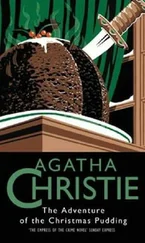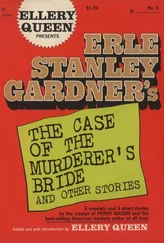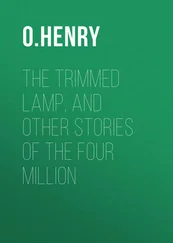On the other side, to the left of the lobbies, is the grand dining room, twenty yards long, then a little octagonal Chinese room for smaller but still formal meals, and a third dining room, for daily use, with a dumbwaiter going down to the kitchens; but another kitchen is planned for the ground floor, to allow the future owner to choose between two domestic arrangements: one that would suit the relaxed style of a lady who likes to do the cooking herself, and another for the mistress of the house who is happy to let her qualified staff take care of everything. In the first case, the downstairs kitchens could be adapted for some other use, and joined up with the rest of the basement, accessed by a larger staircase: that’s where the billiard room is, along with spaces that could be used as recording studios, darkrooms, or workshops for various hobbies.
The main library, in a prime location — one of the corners on the ground floor — is complemented by a smaller one upstairs, which provides a store of reading material handy to the bedrooms. These range in size from large to small, have views in all directions, and among them, as well as the library, are little salons, galleries, and two small dining rooms, one at either end. There are bedrooms with and without dressing rooms, private sitting rooms, and connecting doors, but each one has a balcony, and those at the ends of each wing have terraces as well.
On the next floor up, a long row of small but comfortable bedrooms, with good ventilation and natural light, for the staff, should they be required to live in, plus little sitting rooms, hallways, bathrooms, and ample storage space. The house is crowned by a circular cupola with a dome and glass walls. The various levels, from the basement to the cupola, are connected by stairways, the grander of which are made of marble with wrought iron and bronze railings, while the humbler are of timber or granite, but all are elaborately designed. Disabilities and weariness must be taken into account, so the priest reserves an empty space for an elevator shaft going right to the top of the building. He wouldn’t hesitate to foot the bill for a state-of-the-art model, but he has second thoughts: the newer the mechanism, the greater the likelihood that a specialized technician would have to be called in if it broke down, which, in a remote region like that, would take time and cost a considerable amount of money. So he opts for an old design, so old it’s almost anachronistic to call it an elevator at all, with a hydraulic mechanism (just like the ones built for Frederick the Great’s palaces in Potsdam in the eighteenth century): it’s primitive but, precisely because of that, ingenious and perfectly functional. The degree of mechanical skill that might be expected of any gardener or chauffeur is quite sufficient to puzzle out its system of pulleys, sheaves, and counterweights. Since it has to be built specially, it turns out to be far more expensive — five times more, in fact — than the latest model; but like all the other expenses, this one is balanced by a future saving.
There’s no need to go into more detail. But that’s what the priest does, plunging into the depths of detail, spending long days in research, reflection, and conversations with the architects. In those sessions, a doubt begins to surface, or not so much a doubt as the intimation of a danger: that of creating a monster. Reality consists of beings and things in which all possibilities but one have already been set aside. In reality, alternatives do not coexist. And what is he doing if not attempting to bring them into coexistence? There are many ways of defining monstrosity, he thinks, but their common feature is the coexistence of possibilities among which a choice should have been made. And the house that he is building conforms to that description frighteningly well. Or it will if he gets his way, if he realizes his project to its full extent and depth, and makes a house that is at once big and small, grand and modest, melancholic and joyful, eastern and western, this and that. . The supposedly ideal house could end up inspiring horror, like some diabolical invention. Satan employs the same weapons, after all, subtly introducing possibilities into the real. .
After a few sleepless nights of fretting over this problem, the priest reassures himself. His doubt becomes transparent and dissolves, like the memory of a nightmare yielding to the onslaught of day. After all, the house will be real, very real (that’s the idea), it will manifest the possibilities he has chosen, and be beautiful and harmonious, insofar as his good taste allows. His doubts will be buried, or rather walled up, by the obduracy of matter.
So the construction of the house begins, and its reality shines like an authentic wonder, or the promise of a wonder, in that poor district where nine out of ten families live crammed in one-room tin shacks, shared not only by the numerous offspring of promiscuity and ignorance, but also by dogs, chickens, and pigs. The locals come to admire, although they don’t really understand, nor do they criticize. Criticism would exceed their intellectual capacities, which have atrophied through lack of use, like their understanding. But even if the purely intellectual distance were overcome, understanding would still be beyond their reach because the project is an act of charity performed for their benefit (although with a delayed effect), so it includes them, it’s a part of them, and understanding it would mean understanding themselves, and, in a way, ceasing to be poor.
The teams of builders, technicians, and craftsmen come from the city. The priest refrains from employing local workers, even though it would be beneficial for the region, because he’s worried about the delays and imperfections that might result from their lack of expertise. Although he’s working for the future, and, in a sense, for eternity, there is a certain urgency. It’s a paradox worthy of Oscar Wilde (and worthier still of Thomas Aquinas): eternity has to be secured not in the short term but immediately. And the job has to be done well.
It’s a lightning operation, reminiscent of prestidigitation or magic. But, of course, that’s not how it actually works, because walls don’t go up by themselves or by the power of a spell; they are subject to the step-by-step progression of reality. So, between the morning’s discussions of logistical problems and the evening’s review and forward planning, in the middle of the day the priest has quite a lot of time on his hands, which he spends exploring the town and its environs, an activity in which he has hardly engaged until now, what with the hectic demands of planning and supervising the early stages of the building. The task of getting to know his flock and assessing their material and spiritual condition is an essential part of his ministry, which he has been relinquishing for the sake of the future. He only takes it up now because he has time to spare; he wouldn’t have done so otherwise, secure in the knowledge that he is working to ensure that his successor (indeed the whole series of his successors, since the house is intended to serve for a long time) will not have to defer that task.
He’s saddened by what he sees: at close quarters, the poverty is more shocking than he’d imagined. Perhaps, he thinks at first, it’s because of the contrast between the visions that have occupied his mind these last weeks — architectural visions of beauty and comfort — and the incredible deprivation in which those poor people live. But it’s not just that, although the difference may have heightened the impression. What it means to live without a bathroom, without furniture, crammed into a tiny space, sleeping on bug-infested straw mattresses, under roofs of damp thatch that smell of rot is something that can be grasped without recourse to any kind of contrast. Hunger, malnutrition, and illness are the currency of the exchange between children and adults, young and old, men and women. As the priest approaches the doorways of the dark shacks, nauseating odors check his steps; in a paroxysm of horror and pity, his fantasy fills in what he can’t see. The visible is barely half the problem. The other half is ignorance, resulting from an intricate knot of causes and effects: innocent, animal vice; the lack of long-term prospects; the stunned incapacity to see beyond day-by-day survival; the death of hope. His heart bleeds. The domain of charity opens out before him, a wasteland bathed by the angelic light of religion. He’s ready and waiting for the sharp plowshare of compassion to open a deep furrow in him.
Читать дальше












